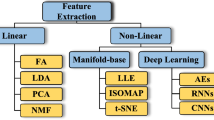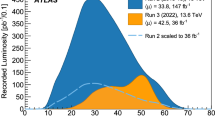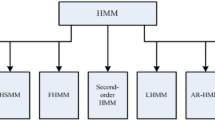Abstract
Using variational autoencoders trained on known physics processes, we develop a one-sided threshold test to isolate previously unseen processes as outlier events. Since the autoencoder training does not depend on any specific new physics signature, the proposed procedure doesn’t make specific assumptions on the nature of new physics. An event selection based on this algorithm would be complementary to classic LHC searches, typically based on model-dependent hypothesis testing. Such an algorithm would deliver a list of anomalous events, that the experimental collaborations could further scrutinize and even release as a catalog, similarly to what is typically done in other scientific domains. Event topologies repeating in this dataset could inspire new-physics model building and new experimental searches. Running in the trigger system of the LHC experiments, such an application could identify anomalous events that would be otherwise lost, extending the scientific reach of the LHC.
Article PDF
Similar content being viewed by others
Avoid common mistakes on your manuscript.
References
ATLAS, CMS, LHC Higgs Combination Group collaboration, Procedure for the LHC Higgs boson search combination in summer 2011, CMS-NOTE-2011-005 (2011).
ATLAS collaboration, Observation of a new particle in the search for the Standard Model Higgs boson with the ATLAS detector at the LHC, Phys. Lett. B 716 (2012) 1 [arXiv:1207.7214] [INSPIRE].
CMS collaboration, Observation of a new boson at a mass of 125 GeV with the CMS experiment at the LHC, Phys. Lett. B 716 (2012) 30 [arXiv:1207.7235] [INSPIRE].
CDF collaboration, Global search for new physics with 2.0 fb −1 at CDF, Phys. Rev. D 79 (2009) 011101 [arXiv:0809.3781] [INSPIRE].
D0 collaboration, Model independent search for new phenomena in \( p\overline{p} \) collisions at \( \sqrt{s}=1.96 \) TeV, Phys. Rev. D 85 (2012) 092015 [arXiv:1108.5362] [INSPIRE].
H1 collaboration, A general search for new phenomena at HERA, Phys. Lett. B 674 (2009) 257 [arXiv:0901.0507] [INSPIRE].
CMS collaboration, MUSiC, a model unspecific search for new physics, in pp collisions at \( \sqrt{s}=8 \) TeV, CMS-PAS-EXO-14-016 (2256653).
ATLAS collaboration, A strategy for a general search for new phenomena using data-derived signal regions and its application within the ATLAS experiment, Eur. Phys. J. C 79 (2019) 120 [arXiv:1807.07447] [INSPIRE].
ATLAS collaboration, Performance of the ATLAS Trigger System in 2015, Eur. Phys. J. C 77 (2017) 317 [arXiv:1611.09661] [INSPIRE].
CMS collaboration, The CMS trigger system, 2017 JINST 12 P01020 [arXiv:1609.02366] [INSPIRE].
D.P. Kingma and M. Welling, Auto-encoding variational Bayes, arXiv:1312.6114 [INSPIRE].
J. An and S. Cho, Variational autoencoder based anomaly detection using reconstruction probability, Special Lecture on IE 2 (2015) 1.
L. Lyons, Open statistical issues in particle physics, arXiv:0811.1663.
E. Gross and O. Vitells, Trial factors for the look elsewhere effect in high energy physics, Eur. Phys. J. C 70 (2010) 525 [arXiv:1005.1891] [INSPIRE].
T.Q. Nguyen et al., Topology classification with deep learning to improve real-time event selection at the LHC, arXiv:1807.00083 [INSPIRE].
R.T. D’Agnolo and A. Wulzer, Learning new physics from a machine, Phys. Rev. D 99 (2019) 015014 [arXiv:1806.02350] [INSPIRE].
J.H. Collins, K. Howe and B. Nachman, Anomaly detection for resonant new physics with machine learning, Phys. Rev. Lett. 121 (2018) 241803 [arXiv:1805.02664] [INSPIRE].
A. De Simone and T. Jacques, Guiding new physics searches with unsupervised learning, Eur. Phys. J. C 79 (2019) 289 [arXiv:1807.06038] [INSPIRE].
J. Hajer, Y.-Y. Li, T. Liu and H. Wang, Novelty detection meets collider physics, arXiv:1807.10261 [INSPIRE].
A.A. Pol et al., Detector monitoring with artificial neural networks at the CMS experiment at the CERN Large Hadron Collider, Comput. Softw. Big Sci. 3 (2019) 3 [arXiv:1808.00911] [INSPIRE].
CMS collaboration, Anomaly detection using deep autoencoders for the assessment of the quality of the data acquired by the CMS experiment, Technical Report, CERN, Geneva (2018).
ATLAS collaboration, Deep generative models for fast shower simulation in ATLAS, ATL-SOFT-PUB-2018-001 (2018).
T. Heimel, G. Kasieczka, T. Plehn and J.M. Thompson, QCD or what?, SciPost Phys. 6 (2019) 030 [arXiv:1808.08979] [INSPIRE].
M. Farina, Y. Nakai and D. Shih, Searching for new physics with deep autoencoders, arXiv:1808.08992 [INSPIRE].
B. Schölkopf et al., Estimating the support of a high-dimensional distribution, Neural Comput. 13 (2001) 1443.
F.T. Liu, K.M. Ting and Z.-H. Zhou, Isolation forest, in 8th IEEE International Conference on Data Mining (ICDM08), December 15-18, Pisa, Italy (2008).
F.T. Liu, K.M. Ting and Z.-H. Zhou, Isolation-based anomaly detection, ACM TKDD 6 (2012) 3.
C.C. Aggarwal, Outlier analysis, in Data mining, C.C. Aggarwal ed., Springer, Germany (2015).
M. Gemici et al., Generative temporal models with memory, arXiv:1702.04649.
T. Sjöstrand et al., An Introduction to PYTHIA 8.2, Comput. Phys. Commun. 191 (2015) 159 [arXiv:1410.3012] [INSPIRE].
DELPHES 3 collaboration, DELPHES 3, a modular framework for fast simulation of a generic collider experiment, JHEP 02 (2014) 057 [arXiv:1307.6346] [INSPIRE].
D. Contardo et al., Technical proposal for the Phase-II upgrade of the CMS detector, CERN-LHCC-2015-010 (2015).
M. Cacciari, G.P. Salam and G. Soyez, FastJet user manual, Eur. Phys. J. C 72 (2012) 1896 [arXiv:1111.6097] [INSPIRE].
M. Cacciari, G.P. Salam and G. Soyez, The anti-k t jet clustering algorithm, JHEP 04 (2008) 063 [arXiv:0802.1189] [INSPIRE].
I. Higgins et al., beta-vae: Learning basic visual concepts with a constrained variational framework, (2017).
J.M. Tomczak and M. Welling, VAE with a vampprior,arXiv:1705.07120.
F. Chollet et al., Keras, https://github.com/fchollet/keras, (2015).
M. Abadi et al., TensorFlow: Large-scale machine learning on heterogeneous systems, (2015).
D.P. Kingma and J. Ba, Adam: a method for stochastic optimization, arXiv:1412.6980 [INSPIRE].
F. Pedregosa et al., Scikit-learn: machine learning in Python, J. Mach. Learn. Res. 12 (2011) 2825.
CMS collaboration, Search for pair production of third-generation leptoquarks and top squarks in pp collisions at \( \sqrt{s}=7 \) TeV, Phys. Rev. Lett. 110 (2013) 081801 [arXiv:1210.5629] [INSPIRE].
CMS collaboration, Search for third-generation scalar leptoquarks and heavy right-handed neutrinos in final states with two tau leptons and two jets in proton-proton collisions at \( \sqrt{s}=13 \) TeV, JHEP 07 (2017) 121 [arXiv:1703.03995] [INSPIRE].
J. Duarte et al., Fast inference of deep neural networks in FPGAs for particle physics, 2018 JINST 13 P07027 [arXiv:1804.06913] [INSPIRE].
Open Access
This article is distributed under the terms of the Creative Commons Attribution License (CC-BY 4.0), which permits any use, distribution and reproduction in any medium, provided the original author(s) and source are credited.
Author information
Authors and Affiliations
Corresponding author
Additional information
ArXiv ePrint: 1811.10276
Rights and permissions
Open Access This article is licensed under a Creative Commons Attribution 4.0 International License, which permits use, sharing, adaptation, distribution and reproduction in any medium or format, as long as you give appropriate credit to the original author(s) and the source, provide a link to the Creative Commons licence, and indicate if changes were made.
The images or other third party material in this article are included in the article’s Creative Commons licence, unless indicated otherwise in a credit line to the material. If material is not included in the article’s Creative Commons licence and your intended use is not permitted by statutory regulation or exceeds the permitted use, you will need to obtain permission directly from the copyright holder.
To view a copy of this licence, visit https://creativecommons.org/licenses/by/4.0/.
About this article
Cite this article
Cerri, O., Nguyen, T.Q., Pierini, M. et al. Variational autoencoders for new physics mining at the Large Hadron Collider. J. High Energ. Phys. 2019, 36 (2019). https://doi.org/10.1007/JHEP05(2019)036
Received:
Revised:
Accepted:
Published:
DOI: https://doi.org/10.1007/JHEP05(2019)036




